Nemrut, Sümela, Amasya, Safranbolu, Mardin… These words are the names of just a few of extraordinary historic and cultural destinations in Türkiye that are slightly off track of international visitors. Each of them has a unique historical and cultural value that will surpass the expectations of most discerning travelers.
Hip Travel crafts tours according to the interests of our customers and organizes guided tours to hidden marvels of Türkiye. We are apt to understand our customers’ needs and pick up the best hotels, guides, restaurants, travel logistics options in order to deliver the most pleasing itinerary for our customers. Let us
also know your interests and expectations from your trip to Türkiye, we’ll surely deliver you a seamless and astonishing travel experience.
Southeastern Anatolia

Nemrut
Located on top a Nemrut Mountain, the tomb of King Antiochus I stands as one of the most ambitious monuments of ancient civilizations in Anatolia. The tomb of the king of Commagene Kingdom, sits on a 2,206 meters high mountain and decorated with statues of their gods each one weighing 6 tons and 10 meters height. It is the “hierotheseion” of the king; i.e. temple tomb and house of the gods. King Antiochus I was the king of Commagene Kingdom which ruled in the region for around two centuries between 109 BC and 72 AD. The Hierotheseion of Antiochos I is one of the most ambitious constructions of its period. It has a complex design and colossal scale architectural work which has not been found anywhere else in the ancient world. The Hierotheseion of King Antiochus which has been built by him as a monument to himself, is inscribed in the UNESCO List of World Heritage. Nemrut Mountain is on the south east region of Turkey. For visitors, watching the sunlight at Nemrut is an eternal experience. The best season for visiting Mount Nemrut is the period between april and october.
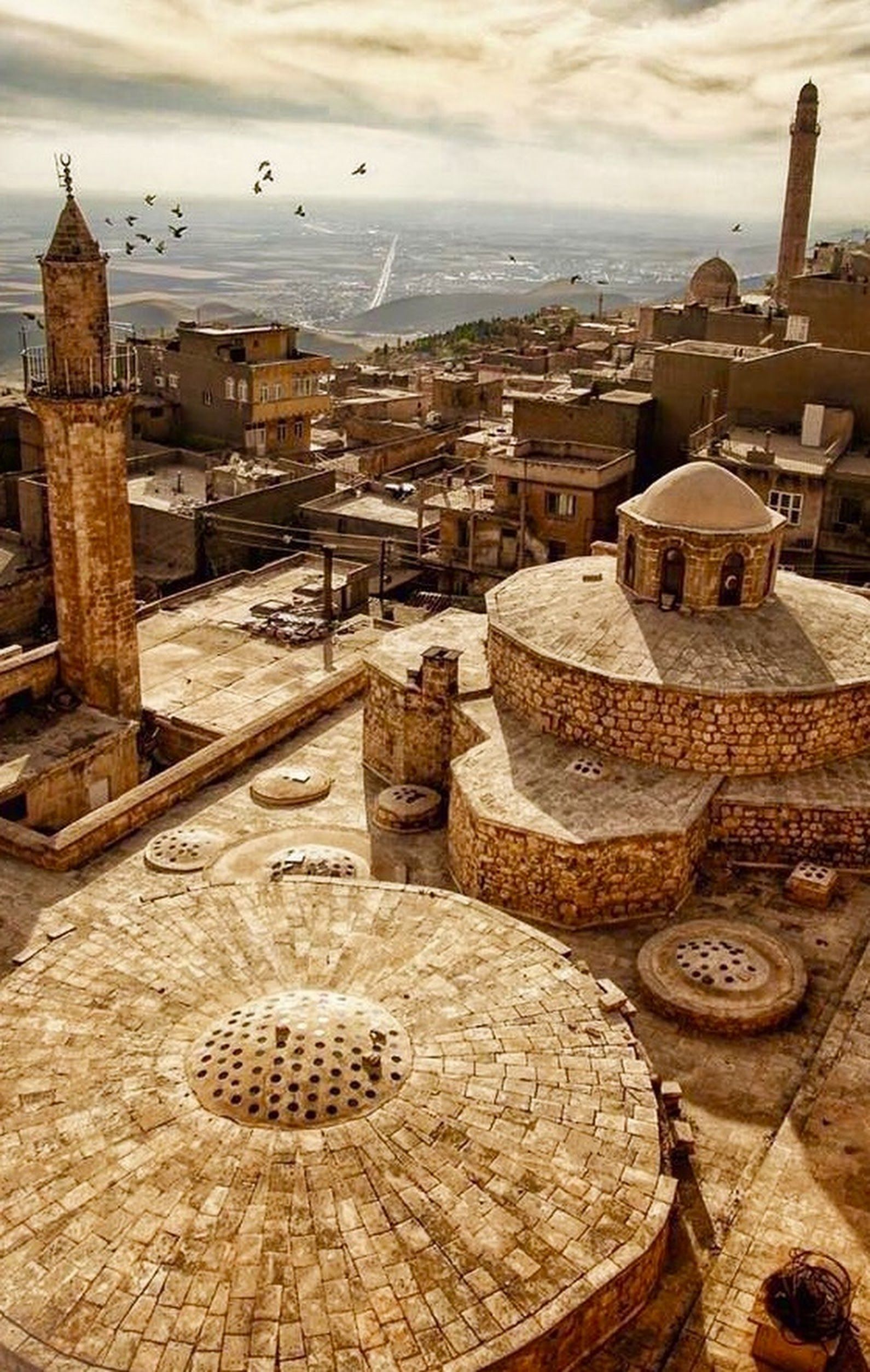
Mardin
It is one of the oldest cities of Mesopotamia. It is poetic, timeless. Mardin thrills its visitors with its stunning stone architecture, its complex ethno-cultural charactericts, its cuisine, rich history and archaelogy. It also has many attractions surrounding the city, such as Dara ruins, Deyrulzafaran Monastry and Midyat. Mardin is the city of elegant stone houses spread across the hill, making the city look like it was carved into a large golden rock. This enchanting city reveals a mystery to its visitors in every small square, every corner of starcased streets. Thousand years of history unfolds in its dwellings… Assryians, Persians, Byzantines, Arabs, Seljuks, Mongols, Mamluks, Karakoyunlus, Artuklus, Akkoyunlus, Safevids, Ottomans all lived and left their mark on Mardin. The first inhabitation in the territory of Mardin dates back to Late Bronze Age. It became part of Assyrian Empire around 1400 BC and since then the city has been shaped by civilizations and empires which will result in today’s beautiful, complex, intriguing Mardin. For today’s visitors, Mardin offers a blend of its multicultural heritage, delicious cuisine, unique architecture and many interesting stories from its long journey of civilizations.

Halfeti
Halfeti is a small farming district on the east bank of the river Euphrates in Şanlıurfa Province in Turkey , 120 km from the city of Şanlıurfa . Most of the villages were submerged in the 1990s under the waters behind the dam on the Euphrates at Birecik . The town was therefore removed to the village of Karaotlak, the building of the new town is now complete. The old town of Halfeti is only partially submerged and is beginning to attract visitors, especially those who hire a ferry to visit the ruins of the nearby fortress of Rumkale, built by Assyrians and later used by Byzantine and Armenian warlords during the Middle Ages. The half sunken minaret of the Savaşan Koy is one of the most iconic images of Halfeti. Halfeti has been used as a set for some Turkish soaps and films and was the subject of an internet urban legend wherein the town was the only location on Earth where black roses grew.
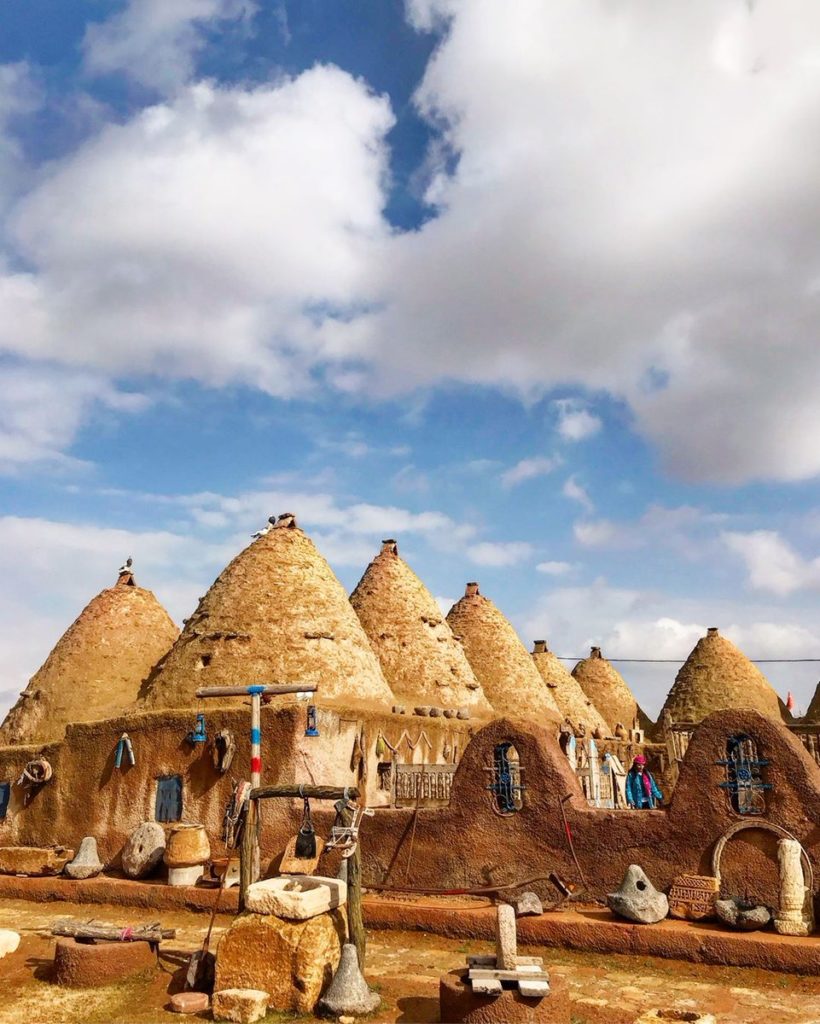
Harran
Harran is an ancient city in the Upper Mesopotamia, dating back to the Early Bronze Age in the 3rd millennium BC. Harran was established as a merchant outpost as it was situated along a trade route between the Mediterranean and the plains of Tigris river. The village of Harran, with its beehive-like dwellings, was a major commercial, cultural, and religious center. Here was the site of the Temple of Sin (God of the Moon), famous throughout the ancient world for its star readers and savants. It was in Harran where Rebecca drew water for Jacob, from whence Abraham decided to make his move into the land of Canaan. This was also where the Roman Emperor Crassus was defeated by the Parthians, with the Legion standards captured and brought back to Ctesiphon to the undying shame of the Romans.
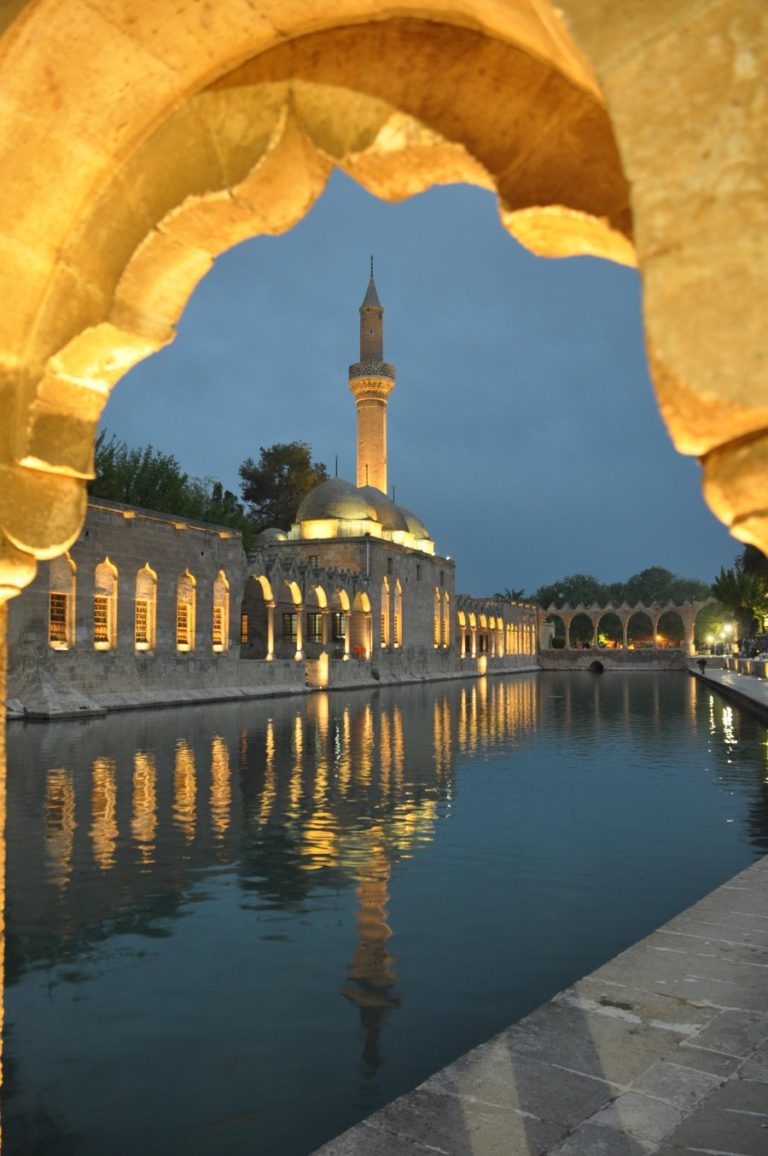
Şanlıurfa
Welcome to Sanliurfa, the city of prophets in Mesopotamia . Home to a number of cultures and civilizations during its long history, Sanliurfa enjoys an extremely rich cultural heritage. The city has great importance and potential as a tourism destination in Turkey especially for faith tourism. This southeastern city of Turkey has a very rich regional cuisine. Visitors to Sanliurfa are not only charmed by the city's exotic sites, also they enjoy the gastronomy adventure this city affords. Şanlıurfa, with its wealth of biblical associations, is known as the "Jerusalem of Anatolia" and regarded as a holy site by Jews, Christians and Muslims alike. According to the Old Testament, the Prophet İbrahim (Abraham), "the father of three monotheistic religions", was born in the city of Ur and he, together with his family, migrated to Harran- the "home of the patriarchs". Some believe that Abraham was born in a cave near a place where the Mevlid Halil Mosque stands now. The site and the cave itself are, therefore, regarded as sacred. The city is closely associated with the Balıklıgöl, which is actually made up of the Halil-ür Rahman and Ayn-ı Zeliha lakes. Right adjacent to these lakes stands the Rızvaniye Mosque. It is believed that King Nemrut cast the Prophet Abraham from the castle into the flames and God turns the fire into water and the woods into fish, hence the creation of the Halil-ür Rahman Lake. After falling in love with Prophet Abraham, Nemrut's step-daughter Zeliha jumps into the fire which subsequently changes into the Ayn-ı Zeliha Lake.
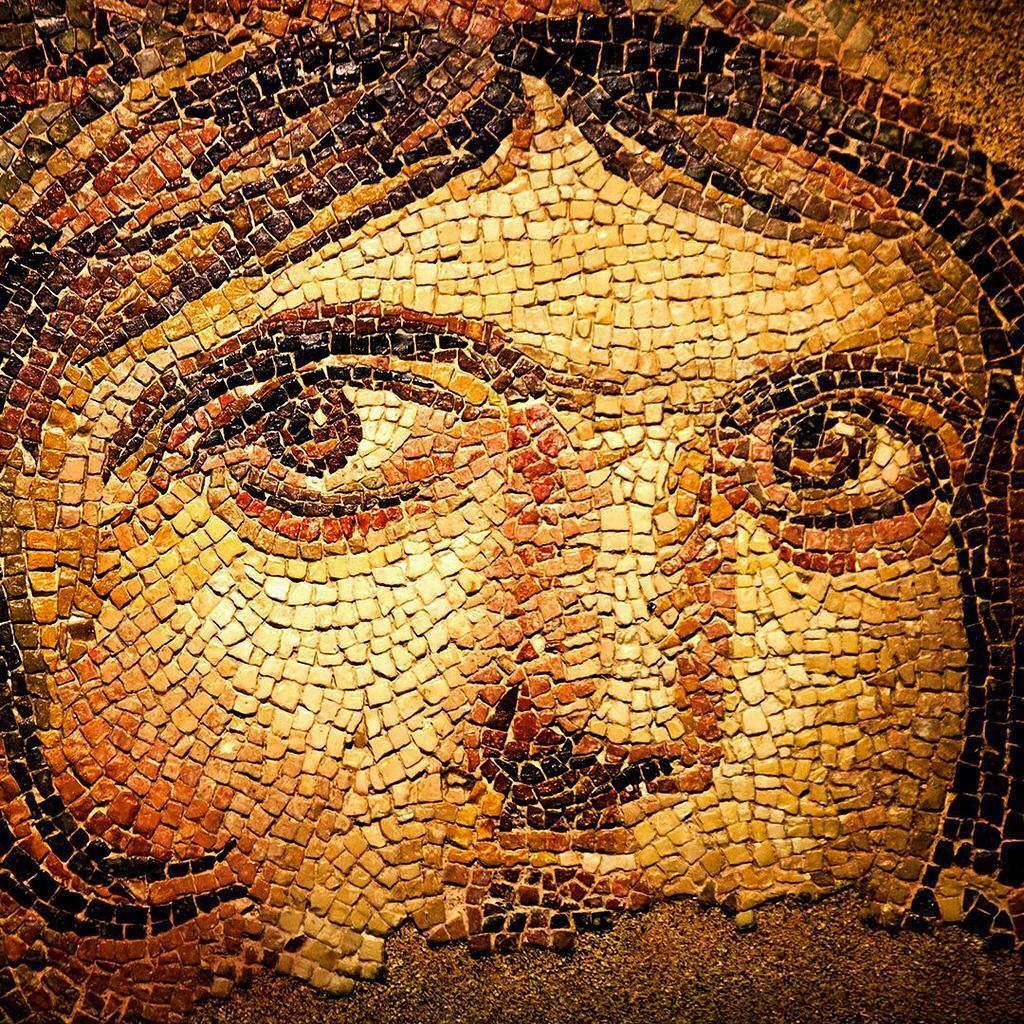
Gaziantep
Gaziantep is one of the modern provinces of South-Eastern Anatolian Region and also one of the oldest of Hittite origin. Being the center of pistachio nut cultivation in Turkey and with its extensive olive groves and vineyards, Gaziantep is one of the important and industrial centers of Turkey . The area was continuously inhabited starting from the Paleolithic age and witnessed the domination of such powers as the Assyrians , Persians , Romans , the Byzantines , Abbasid and the Seljuk Turks. The times of ascend for the Ottoman Empire meant the same for the city. There are many mosques , inns, baths and medresse built during this time. The splendid collection of Zeugma Mosaic Museum in Gaziantep alone is probably sufficient to attract enthusiasts of history and culture as well as art historians and archaeologists of the world to visit Turkey. In terms of the floor area of the museum, as well as the surface area of the mosaics exhibited, it is the second largest of its kind in the world. Amongst the most exciting archaeological finds of our times, the mosaics unearthed in Zeugma ancient settlements cover a total of 2,500 square metres, and reveal the highest level that the arts reached at the time.

Diyarbakır
Diyarbakır, known in ancient times as Amida, has been the cradle of 26 different civilisations throughout its 5000 year history. The city extends across a basalt plateau close to the banks of the Dicle River with the black basalt triple walls encircling the old town and giving the city a rather dark appearance. The city walls are 6 km long and reinforced with 16 towers with five gates. The walls are decorated with inscriptions and bas-reliefs and present a superb example of medieval military architecture. The fortified city of Diyarbakır and the landscape around bearing the traces of several civilizations throughout the history has been inscribed on the UNESCO World Heritage List in 2015. The site encompasses the Amida Mound, known as İçkale (inner castle), the 6 km-long city walls of Diyarbakır with their numerous towers, gates, buttresses, and 63 inscriptions from different periods, as well as Hevsel Gardens, a green link between the city and the Dicle that supplied the city with food and water.
Black Sea Region
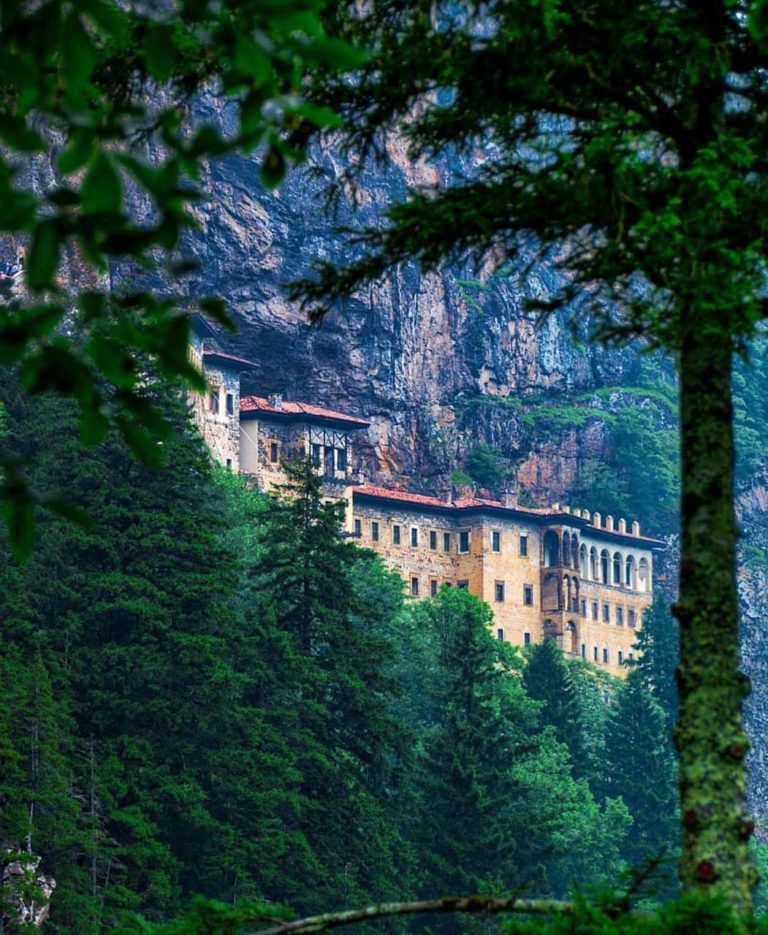
Sümela
This fascinating Orthodox monastry in Trabzon is located on a steep cliff that has an altitude of 1.200 meters. It is estimated that the monastary has been founded around 386 AD. It has been fallen into ruin couple of times and restored by various emperors. The monastry has an autonomous status throughout the centuries and kept exempted from taxes. Sumela’s status was also granted by the protection of sultan after the conquest of Ottomans in 1461. Sümela Monastry has gone through a reconstruction work and also restoration process between 2015- 2109. Currently it is open and visitors are allowed. With its outstanding location, Sumela Monastry has an outstanding view of forests ands streams below. Its architectural, cultural and religious significance, the Sumela Monastry is worth visiting.

Amasya
A beautiful small city nestled in the mountains over Black Sea Region of Türkiye. Located in a narrow valley along the banks of the Yeşilırmak (Green River - Iris), this calm and quaint city has a rich history dating back to 7,500 years ago. The city is near Black Sea, but since it is surrounded by mountains and high above the coast the city has an inland climate. Thanks to its unique climate, Amasya is famous for its small and delicious apples, known with city’s name. During antiquity, Amasya was a wealthy provincial capital, home of many kings, princes, artists, poets and scientists. Famous geographer Strabo is from Amasya. During the Ottoman times, it was an important cultural center of the empire, where Ottoman princes are sent to be educated, learn how to govern and gain experience. Today, traditional Turkish houses from Ottoman times, have been restored and serve as hotels and restaurands. Behind the Turkish wooden hosuses in Yeşilirmak bank there are rock tombs of Pontic kings carved into the cliffs overhead. Visitors may see in Amasya, the ruins of the citadel, 2000 years old water channels and 1000 years old bridges. The city also has some important historically and architecturally precious buildings from the Ottoman times; the Ferhat water channel, the 13th century Seljuk Burmali Mosque, the 15th century Yildirim Beyazit Mosque and Complex, the 14th century Ilhanli Bimarhane Mental Hospital with lovely relieves around its portal.

Safranbolu
It is definitely one of the most beautiful towns in Turkey. Safranbolu is a small town in western Black Sea region, famous for its more than 2000 authentic, elegant Turkish houses lined up along the cobbled streets. Having its name derived from the saffron flower, Safranbolu is listed in UNESCO World Heritage List. The city presents some of the most unique and well kept examples of Turkish civilian architecture during Ottoman times. The historical houses of Safranbolu are grouped in two main areas: First one is the “Bazaar” section and the second one is “Vineyards”. Despite the changes over centuries, the lifestyle in Safranbolu is somehow kept to a certain degree. Today, the locals living in Safranbolu have similar living traits as it was during Ottoman times. Locals used to spend the winter months in the "City", and they moved to their summerhouses in the "Vineyards" upon the arrival of warmer summer days. Designs of the houses and the wooden decoration surprises visitors with its superior taste. Some houses have indoor pools to cool the air and to avoid fires. Houses represent a supreme taste in design and very excuisite examples of woodwoork.
Aegean Region
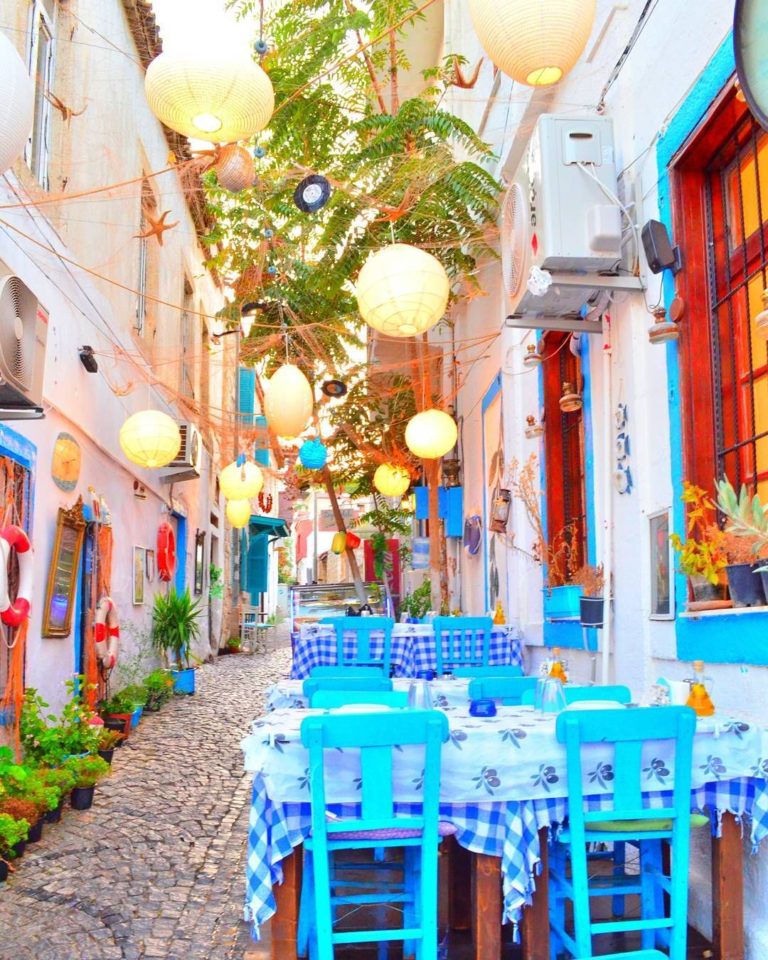
Çeşme and Alaçatı
Çeşme is a very popular summer resort in particular with the residents of nearby İzmir and includes such historical sites as a 16th-century castle and an ancient caravanserai. The white sandy beaches stretch lazily along a road lined with exquisitely built houses, several large hotels and a number of restaurants, serving excellent seafood and Turkish specialties. Most of the hotels are set on beaches outside the centre of town and the peninsula has excellent conditions for windsurfing, with Alaçatı's beach being one of the best spots. Alaçatı is one of the most traditional towns in Turkey with stone houses, narrow streets, boutique hotels and restaurants with tables on the streets. The area is also home to the Alaçatı yacht marina and the famous Port Alaçatı development, created by the French architect Francois Spoerry and his son, Yves Spoerry.
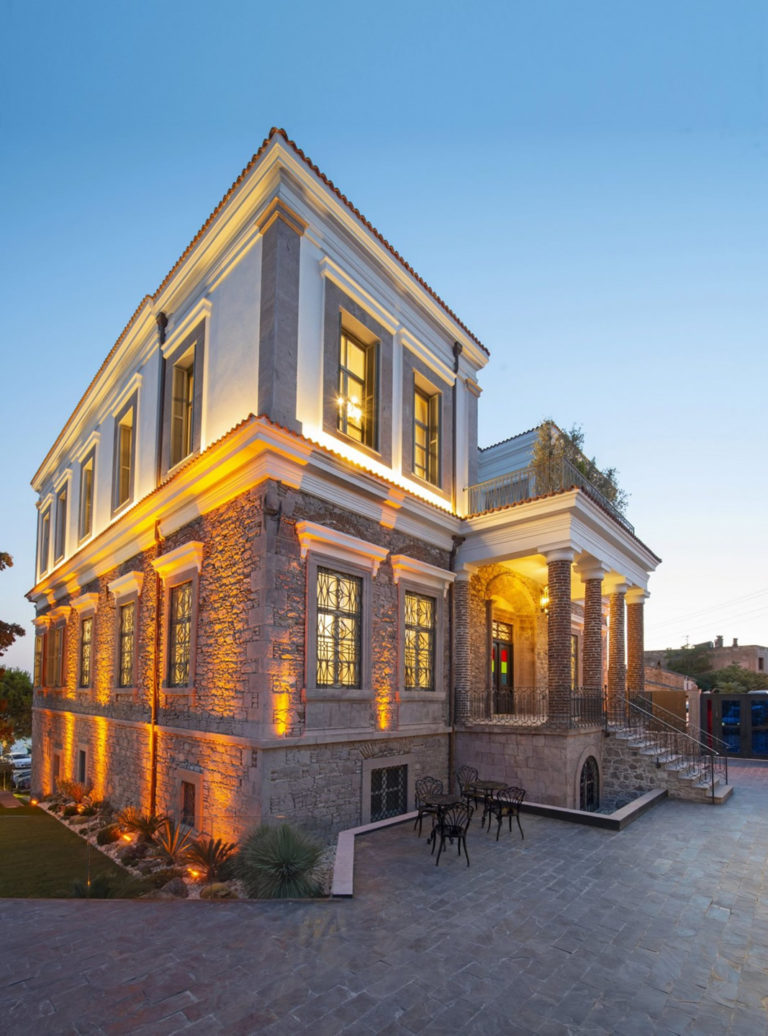
Ayvalık
Ayvalık is one of the country's fast emerging but still largely untouched tourism destinations. The impressive geography is complemented by pine forests and olive orchards that grow in the region's fine, clean air. The island of Lesbos is right across the bay, and the Ayvalık Archipelago, consisting of 24 small islands, surrounds the town. Ayvalık has the unique atmosphere of a historical city set amid remarkable natural beauty. The vestiges of 18th and 19th century life are still visible in the streets. The county's fishing culture and other maritime activities, along with olive cultivation and olive oil pressing has deeply shaped not just the economy but the life of the area. At present Ayvalık is the olive capital of the Aegean Region, with its orchards exceeding 2.5 million trees. These orchards add to the charms of the region, and put Ayvalık on the map for nature loving gourmets everywhere.
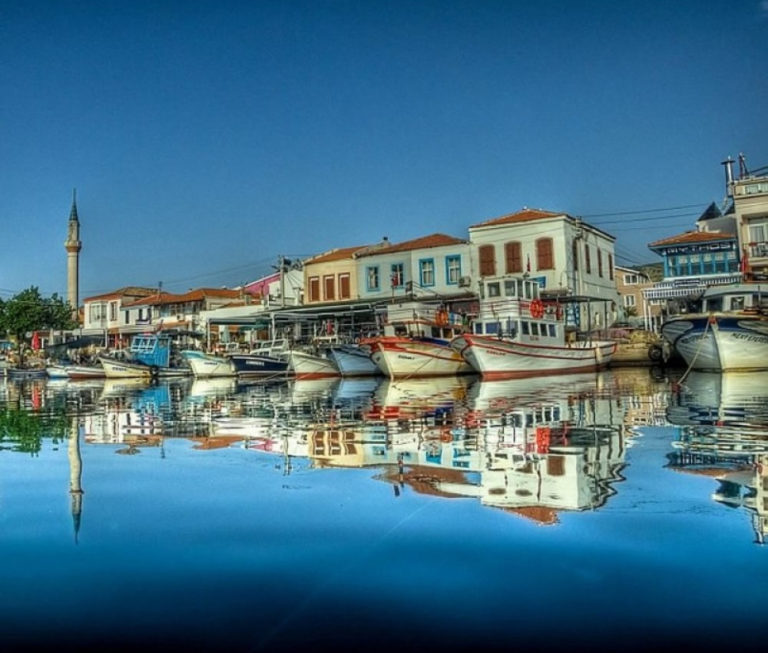
Urla
Urla is a charming coastal town from Izmir Province in Turkey where Turkish and Greek culture mix. Since always, the town of Urla has been the home of prestigious artists and artisans of all type. It’s also known for its dynamism and its various festivals as the International Artichoke Festival or the Barboros Oyuk Festival. Its inhabitants will welcome you with warmth and immerse you into their traditions in a creative atmosphere.
Mediterranean Region
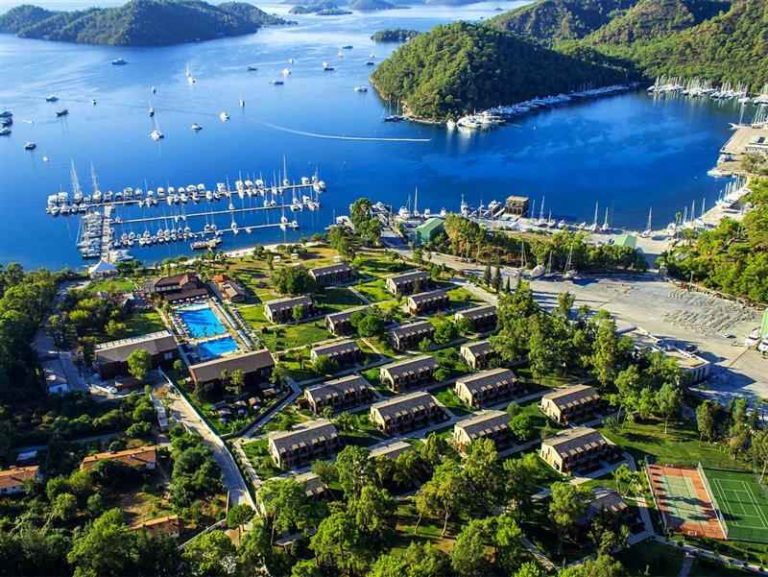
Göcek
Göcek is a historic spot right on the Mediterranean Sea. Historically, it was known as Kalimche and is believed to be right around where Icarus fell when he flew too close to the sun in the famous Greek myth. It was a harbour town then, and now it’s all the more so with 6 large marinas serving the yacht tourism in the region. The town itself is small and quaint, with a walkable city center and loads of chic cafés, restaurants, and places to dine while looking out over the beauty of the Mediterranean.

Antalya
Antalya was founded in 158-138 BC by Attalus II, King of Pergamon, who named the city Attaleia after himself. Having been inhabited continuously since then, it was encircled by strong protective walls in Roman times. The Byzantines and Seljuks successively occupied the city before it came under Ottoman rule. Today it is one of the world's best-loved tourist resorts, with numerous five-star hotels, holiday villages and entertainment establishments. Besides the chances Antalya offers for skiing on the mountains and then descending to the shore for a swim, the proximity of a great number of archaeological sites and ruins enhances its appeal. There are great works of art from different civilizations at every corner of the city. In the picturesque old quarter of Kaleiçi, narrow, winding streets and old wooden houses abut the ancient city walls. There are many interesting places to visit in this province, like the ruins of Perge, Aspendos and Side to the birthplace of St. Nicholas in Patara and the St. Nichola church in Demre, where you can find St. Nicholas’ grave.
